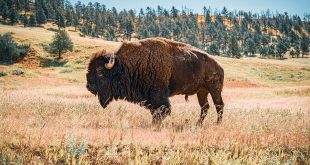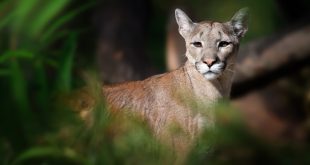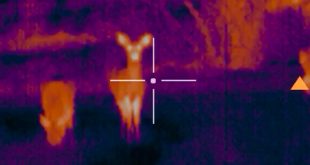
The general synopsis of the Wyoming winter conditions for 2022 would be, “mild,” very, very mild up until just recently. In fact, up until this week the outlook for snow pack and spring run off was almost scary. However, a large spring storm has sent the Cowboy state a snowy wallop and the outlook is beginning to improve dramatically.
Before the storm the snowpack level statewide was sitting around the 65-70% range of normal. After the storm Wyoming’s mountain ranges are now averaging out to about 84% of normal snow water equivalent at this point. The Bighorn Mountains and the Laramie Mountains are the standouts with nearly 100% of normal snowpack while the lagging regions seem to be those in the Black Hills of the northeast corner of the state clocking only about 60% of their normal snowpack so far.

The historically snowpack heavy regions of the Absaroka, Teton, Wind River and Wyoming ranges are all a little bit below average with about 80% of normal snowpack. With some additional moisture and cold temperatures on the near-term horizon I am hopeful the outlook will continue to improve over the next few weeks, during the remainder of the month of April and put the western regions of the state back on track to a snowpack in the 90% range for the final readings of the year.
As for the wildlife outlook, the winter has been extremely mild for our deer, elk and antelope herds this year. With very little extreme cold and light moisture, I think it suffices to say that our herds are in good shape coming out of the winter months. Barring any real freaky weather events at this point, I think we should see some very solid improvements in our herds post winter, but that might not be saying much either.
Wyoming’s deer and antelope herds were in terrible shape going into the winter. The drought conditions over the past few years have had drastic effects on our deer and antelope herds nearly statewide. This has caused the Game and Fish Department to drastically cut, cut and cut some more, our overall hunt quotas over the past few years. According to state data, our mule deer herd is down over 40% statewide and the antelope herd is estimated to be down over 30% throughout the state on average. And these are just average, some individual herds specifically are down over 60% from objective herd numbers. I have been tracking this data for nearly two decades now, and I have never seen numbers like these before.
These developments have caused some very drastic tag allocation and quota cuts that run very deep in some areas of the state. I will give it to the Wyoming big game managers for having the courage to drop tag quotas so deeply in a desperate effort to stabilize the numbers. I’m sure these were not easy decisions and not taken lightly by the state from a financial standpoint if nothing else.

Attached are a few heat maps with the tag quota cuts for deer and antelope over the past two years for each area and region of the state. For mule deer the western side of the state seems to be the lone standout when it comes to tag allocation cuts. Most of Regions G and H have been spared any tag allocation cuts and Region G specifically seems to be in much better shape than the rest of the state in a number of measures when it comes to mule deer numbers. Based on discussions I have had throughout the winter with the biologists in that area, the deer in Region G seem to be on the way to a very robust rebound. Doe to fawn ratios at nearly 80 fawns per 100 does is very high. In fact, this is the highest doe to fawn ratio recorded in the state in over 20 years! Add to that the buck to doe ratio in the region is also clocking a near decade high of almost 45 bucks per 100 does, a number that has only been seen five times since I graduated high school in 1990 and the outlook for this region this year could be very solid and continuing to improve.

Many of the other regions of the state are on the opposite track however. With most other areas seeing tag quota reductions over the past two years alone that seem to average around 30-40%. The central regions of the state seem to be the hardest hit by the drought and correspondingly have seen tag quota reductions of more than 50%. The historically good mule deer limited quota areas of 34, 87, 89 and 90 have been hit the hardest with hundreds of tags removed from the quota making these tags even harder to draw.
The antelope scenario is almost as bad as the deer, with nearly identical regions suffering the hardest. The central and eastern portion of the state is suffering from drastic tag quota cuts. Just like the deer regions, the areas around the western side of the state actually seem to be rebounding from the tough winters of 2016 and 2017 with tag quota increases seen over the past few years. Areas such as 60, 64, 91, 92 and 96 have all continued to rebound and seem to actually be doing well.
With a very mixed picture for the upcoming hunting season on the horizon, I am very hopeful that the mild winter and the blessing of a warm wet spring will bring us some much needed relief from this massive downturn we have seen particularly with our deer and antelope herds. With thousands of total tags removed from the quotas for this year, good deer and antelope tags might be pretty hard to come by in the draw. Even more than ever this year, make sure you do the proper research and homework before applying for a high-quality deer or antelope tag in the Cowboy State. Best of luck.
 Eastmans' Official Blog | Mule Deer, Antelope, Elk Hunting and Bowhunting Magazine | Eastmans' Hunting Journals
Eastmans' Official Blog | Mule Deer, Antelope, Elk Hunting and Bowhunting Magazine | Eastmans' Hunting Journals






No hand-ringing will help. The glory days be toast. Can you spell GLOBAL WARMING. It was great of Trump to pull the United States out of the Paris Accords on warming. He was a hell of a leader wasn’t he. Delete if too heavy.
Killer cold winters wouldn’t happen if global warming was such a problem.
Global warming? Yeah, right. Have some more kool-aid.
Well, at least WDFG has the stones to cut tag numbers in response to actual numbers of animals on the ground. THEY at least do the survey work to get a more accurate count on actual lives on the ground animals. Oregon on the other hand is just the opposite: keep tag numbers pretty much the same or slightly reduced, turn bow hunting in eastern or into a draw only ( only opportunity), regardless of animal numbers, and still not addressed predator management.